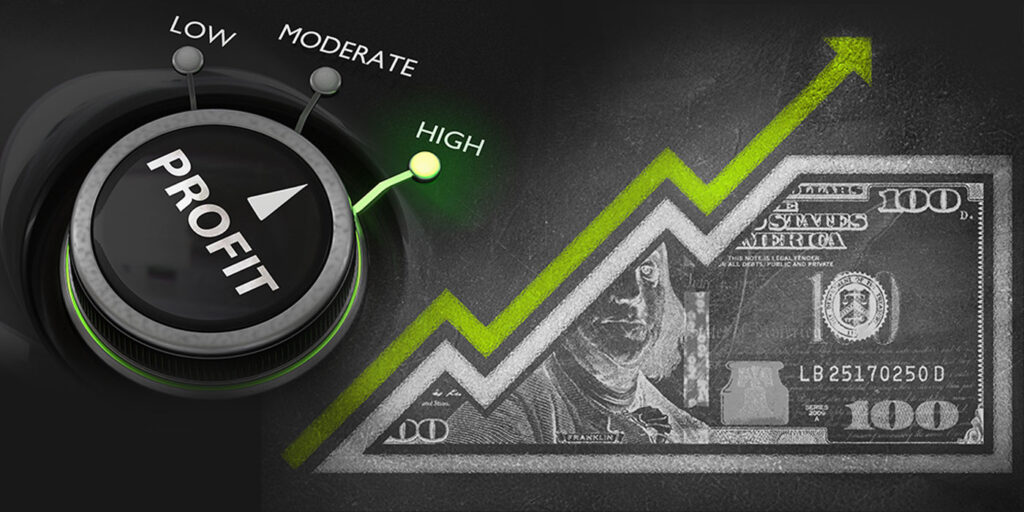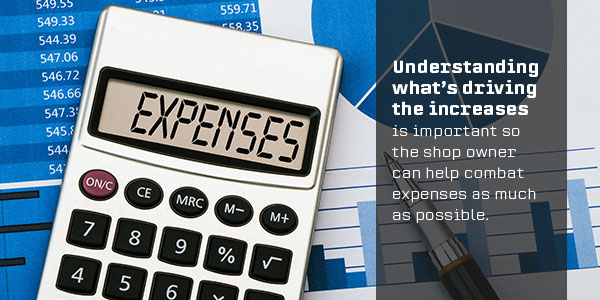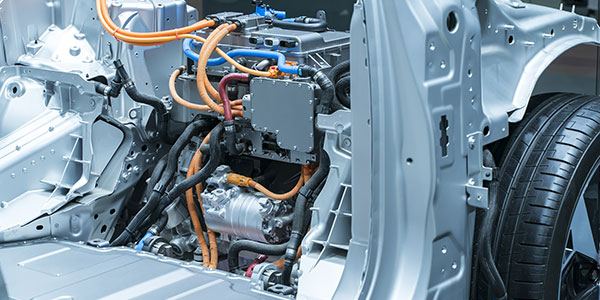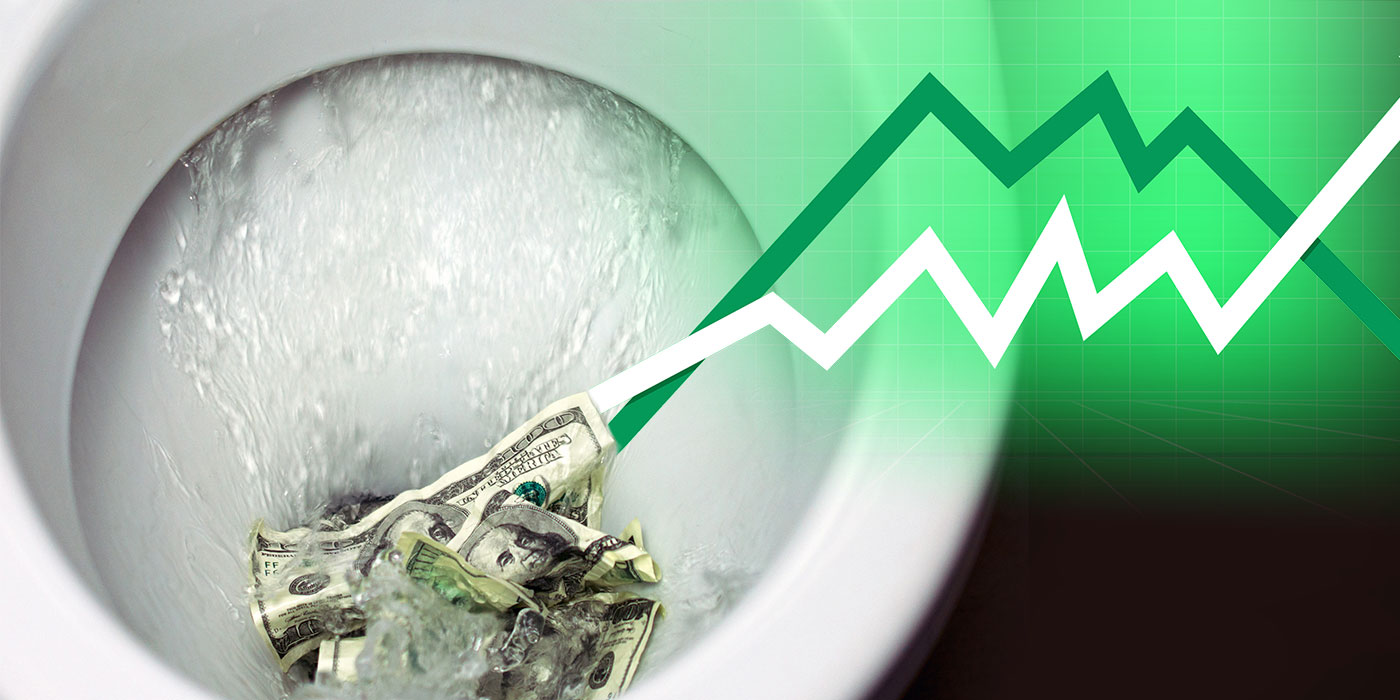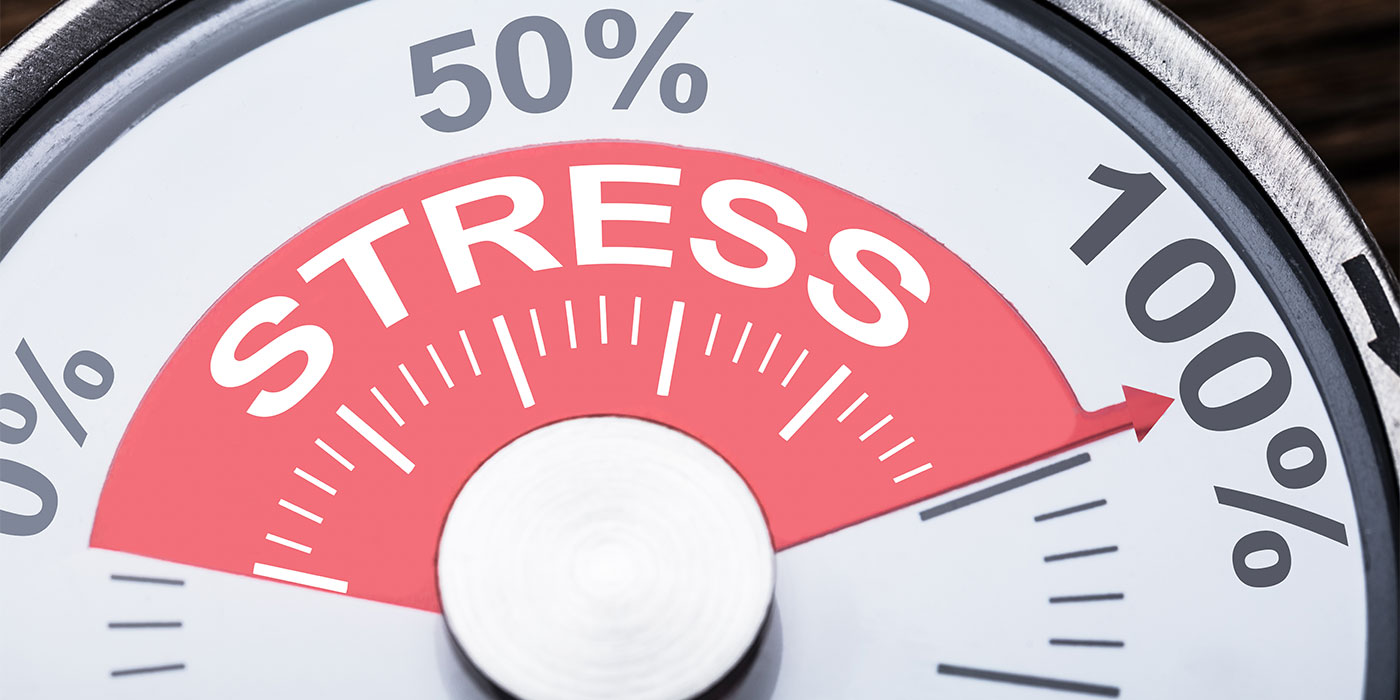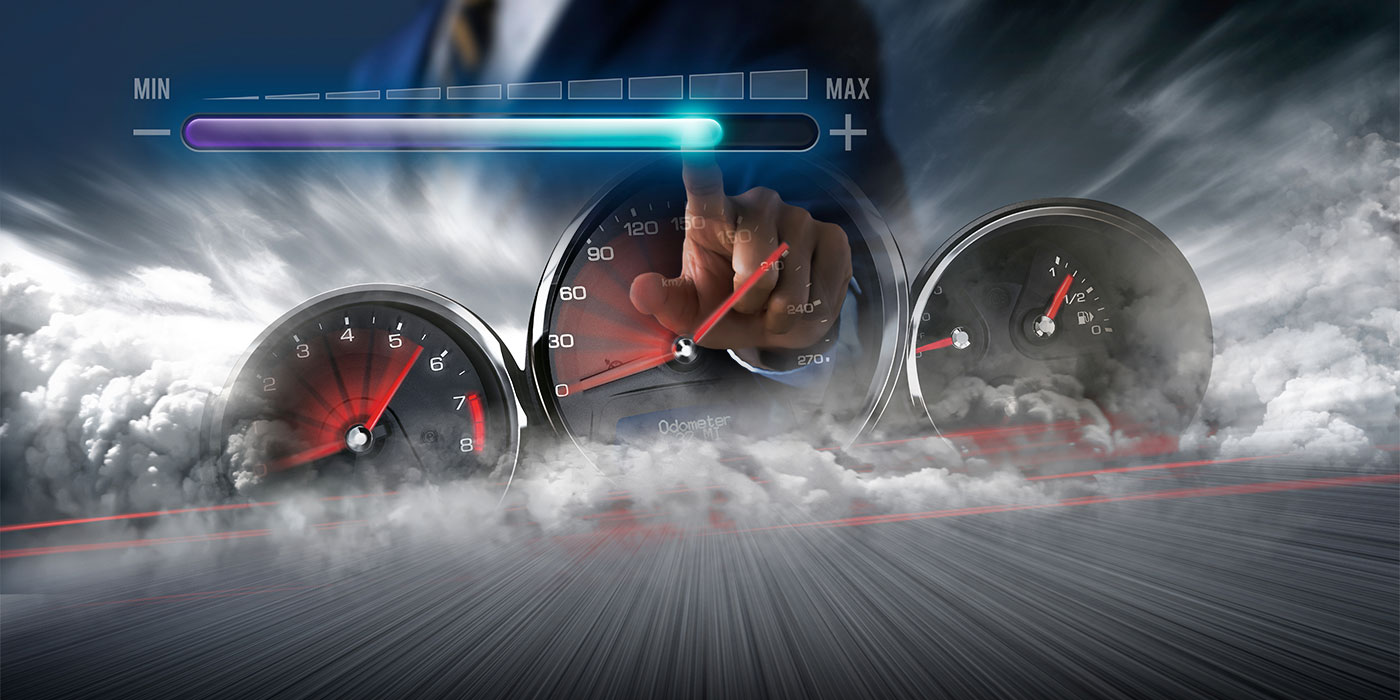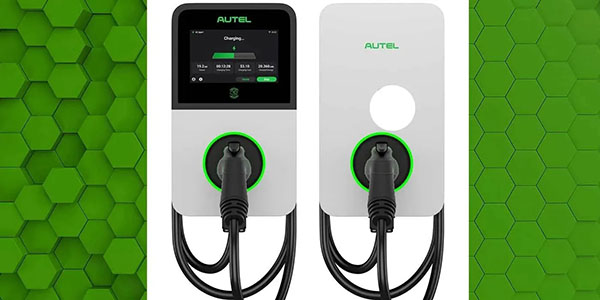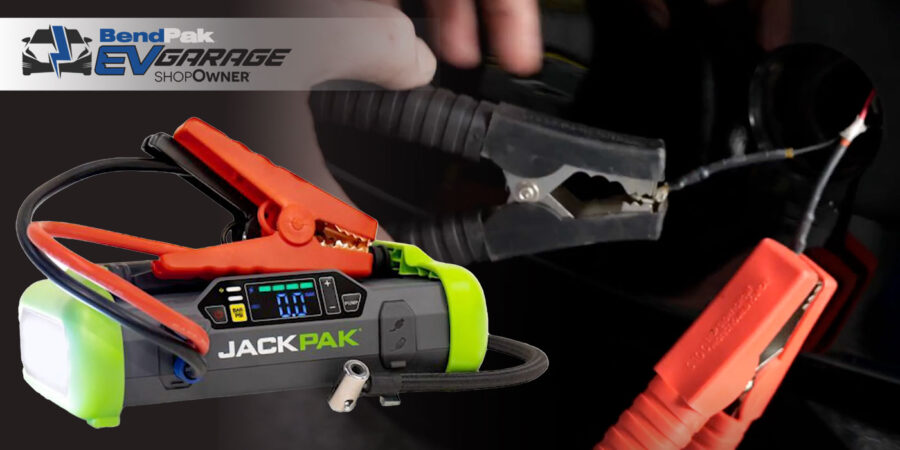This article is the second in a series on accounting and financial management. To read part 1, “Demystifying Body Shop Accounting”, click here.
I’m sure you’ve all noticed, the cost of repairing vehicles has increased significantly over the past few years, yet we aren’t getting the sales to combat the ever-growing expenses. Insurers aren’t making adjustments to make the shop owners “whole,” so we’re making the same money and having to pay increases in many different areas — and the result is a decrease in profitability.
As I see it, there are different areas of inflationary costs impacting our profits:
- Labor shortages driving up higher cost of repair
- Supply chain issues causing limited parts availability
- Production delays limiting overall production
- Electric and other vehicle technologies causing more parts per repair.
Understanding what’s driving the increases is important so you can help combat those expenses as much as possible. Knowing your shop financials is more important now than it has ever been. Being educated on what it takes to “pay” for the business to operate is crucial to its financial success. Knowing the fixed costs and what your breakeven point is up front may be the difference between making money during the month or not.
Fixed Expenses
It’s very important to know what it costs to run your shop. There are expenses (called “fixed” expenses) that occur even if you don’t repair one single vehicle. These are basically items that keep the building/facility “on,” or the cost of running a business. You have to pay them no matter what. Examples include rent/taxes, electric, gas, phone, water, etc. The dollar amounts may change monthly, but they’ll always be there. Also, they’re not dependent on how many cars are repaired throughout the month or impacted by the type of part you choose for a repair.
The opposite of fixed expenses are “variable” expenses, which are completely dependent on the individual jobs that are run through the shop. Your expense and profits move up and down according to those jobs. Some examples of variable costs include:
- Labor expense for technicians working on the vehicles. This is variable because it’s dependent on what you charge and then ultimately pay in labor hours for each job. For example, if you bill 10 hours on one job and then 15 on another, the labor expense for the shop changes up and down based on your jobs.
- Parts expenses are also based on each estimate when you choose what type of part or what vendor you’re using to repair the vehicle. If you choose an original equipment manufacturer (OEM) part from a vendor that gives a good discount, you’ll make more money than if you choose a vendor that doesn’t give a good discount. The cost and, ultimately, the profit is completely dependent on the repair.
- Sublet expenses are variable as well. If you decide to sublet a part of the repair out to a vendor versus fixing it in-house, this expense/profit is impacted. When you write the estimate, the decision is made to use an outside source.
In all of the above categories, it’s easy to see that the expenses move up and down throughout the month based on the mix of vehicles you get in the shop and the decisions you make when writing estimates.
In order for your shop to be profitable, you must know the overall cost of running the business. Having an understanding of what it takes to keep the building running helps you know what your true breakeven point is. The breakeven point for a business is basically:
Fixed Costs = (Revenue – Variable Costs)
When the amount for the fixed costs (costs you have every month no matter how many vehicles you repair — rent, utilities, salaries for front-office employees, etc.) and the sales minus the costs of the repair (only those associated with the repair — labor, parts, paint and materials, sublet) match, that’s considered your breakeven point.
Knowing this information can help an owner understand how many sales the business needs in order to pay for all of the expenses. Anything in sales on top of that number begins to earn you a profit. Today, with the inflationary expenses we’re facing, knowing what your breakeven point is even more important.
Inflationary Expenses
In our industry, the pool of technician talent has dwindled over the past 20 years. Unfortunately, we’re experiencing a large decrease in technicians, which puts the body shop owner at a disadvantage. The days of picking and choosing what technician you want are long gone.
In most markets, the scarcity of experienced and skilled techs has driven the costs much higher; it’s a supply-and-demand situation. Technicians know that they can get a higher rate from an employer because there isn’t a huge pool of competitors waiting at the door to take their spots. Unfortunately for the body shop owner, they’re right. In order to obtain a skilled technician, you have to pay for it. The flat rates are getting higher as the technician pool gets lower. Then, we have our competitors offering incentives, so keeping those technicians satisfied is difficult.
Here are some other dynamics going on:
- Increased tech compensation. I’ve seen varying approaches to this. Shop owners must understand the market and what is happening around them regarding pay for skilled technicians. If a competitor is offering benefits such as 401k, then you must be able to offer the same. Knowing what the going rate is per role in the market is important so that you don’t underpay or overpay for that skill. Being able to diversify your technician pool is also beneficial for your business. Assigning the correct skill level to each function of the repair can help save you time and money. Looking into and partnering with local vocational schools to get an opportunity to introduce yourself to new technicians has also been shown to be beneficial. Also, offering mentorships for apprentices entering the industry has shown to be a successful approach to combatting the ever-growing costs. Having a highly skilled tech teach an apprentice the trade is both beneficial to your shop as well as the apprentice, since he or she is getting hands-on training and making money at the same time.
- Supply chain issues. In the world of COVID, we’ve all experienced delays in getting parts in a timely manner due to supply chain issues. Not getting parts causes multiple issues for a shop. Because of the supply chain issues, shops have limited choices for parts when choosing to replace. Just like the labor example above, the lower the amount of options, the more expensive the choices become. Having a limited amount of parts to choose from will limit your ability to make the more profitable approach. Parts vendors are aware of the issue, since they’re dealing with it as well, but they then have the ability to increase their prices. Having good relationships with your vendors is extremely important during this time and could be the difference between being profitable or not. The decreased supply chain has also led to production delays, causing revenue shortfalls that make overhead burdens more significant. A shortened supply chain obviously slows down production, and then it takes longer for the shop to make money because vehicles sit longer and take up space in the shop, preventing other vehicles from coming in. Cycle time increases significantly and can cause increased costs right along with it. If your shop is on the hook for rental expenses, the amount you pay increases the longer the repair lasts. The obvious expenses (such as that one) are apparent, but the hidden expenses are those that you don’t get to experience — increased sales. You feel the impact to your bottom line.
- Electric vehicles. The increase in electric vehicle technologies and other emerging vehicle technologies has resulted in more parts per repair, shifting sales mix and making margins appear lower even though actual gross dollars may be higher given an equal number of repairs. We all know that repairing a vehicle is more profitable for a shop than changing out parts. With these new technologies, there are more intricate parts that need to be changed when a certain area of the vehicle is damaged. Because of the newness of these types of parts, insurance companies pay higher, but limited parts availability decreases the profit on those sales. Because the industry is somewhat immature in this area, a shop owner must be educated on what types of technologies are currently out there and what is to come in the near future. Understanding the dynamics of this aspect of the business is extremely important, as it’s only going to grow and change.
Summary
With our ever-evolving business and inflationary increases, it’s more important than ever for body shop owners to understand their businesses and what drives profitability. Knowing the trends and constraints in the industry helps you make better business decisions, which ultimately will help you combat those increases in expenses. Knowing your breakeven point gives you something to strive for monthly, so that you can guarantee yourself a successful business.

